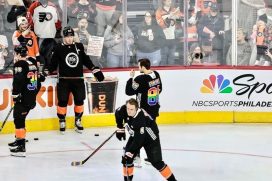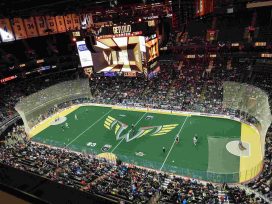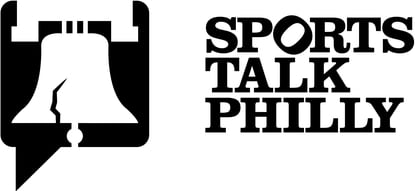Photo: Nina Weiss/Flyerdelphia
During the 1980s to mid-1990s, legendary Flyers broadcaster Gene Hart hosted several different incarnations of a radio call-in show called "Flyers Fone." One especially persistent caller used to phone the show on a weekly basis to ask "When are the Flyers going to call up that Tookey kid?"
Every time, Hart would patiently explain that veteran AHL star Tim Tookey was a fine player and vital to the Hershey Bears — albeit far from a "kid" by that point in his career — but he was not the roster fit the Flyers were looking for at the time. Hart would always conclude by saying, "There's nothing wrong with being a star in the second-best league in the world."
One of the most commonly asked questions by hockey fans is a fill-in-the-blanks updating on the "Tookey Kid" query that Hart used to get: Why does a team recalls Player A (quite often a checking forward or defensive defenseman) rather than Player B (almost inevitably a player with gaudier scoring stats or, alternatively an enforcer).
Most of the time, the answer falls within one or more of three broadly-defined areas:
- What role is the NHL team hoping to fill?
- For how long is the team likely to need the callup player?
- What is the potential recall's age and experience level compared to other candidates?
For example, if Mark Streit had not gone with a long-term injury, the Flyers probably would have preferred to keep Shayne Gostisbehere at the AHL level for at least a little while longer. No one ever questioned whether he was NHL-ready in terms of his shooting, passing and skating ability. Rather, it was focusing on developing his game away from the puck — an area that remains a work in progress – that was the reason he started the season in the AHL.
Had the injury been to a defenseman other than Streit, or perhaps Michael Del Zotto, the Flyers would have been more likely to recall a different player. Streit's absence specifically created a void on the top power play unit and, thus, an opportunity for Gostisbehere. Thus far, Ghostisbehere has played on the third pairing at even strength to alleviate some of the defensive pressure on him while simultaneously being set free to play on the power play and during 3-on-3 overtime situations.
Gostisbehere, who added 15 pounds of muscle during his nearly year-long rehabilition from a torn ACL, is also physically better equipped to handle the rigors of the NHL than he was during his two-game callup to the NHL last season. The Flyers hope that he can continue his defensive development on the job in the NHL — a tall order — but through the first five games of his recall, the positives have outnumbered the negatives. The evaluation will be ongoing for the duration of Streit's absence.
Most recently, the Flyers recalled Phantoms captain Colin McDonald to substitute for Sam Gagner (laceration near his left eye) on what essentially is the team's fourth line, at least in terms of ice time distribution. Primarily, the team is looking to fill about seven to nine minutes of ice time per game with a keep-it-simple type of role player; a role that the offensive-minded Gagner himself is not ideal to play but supplements with second power-play unit time.
McDonald's style of play is closer to what the Flyers need as a substitute for a bottom-six role than what third-year pro Petr Sraka brings. If the Flyers — who are last in the NHL in scoring — were to bring up Straka, who co-leads the American Hockey League in goals, it would probably be in attempt to generate more scoring higher in the lineup.
There may also be something else at work: a trust factor. Straka was an underachiever during his first two pro seasons. Actually, the best games he played last season may have come during a three-game callup to the Flyers. Particularly in the second half of last season, Straka played himself deep into then-coach Terry Murray's doghouse and to the brink of being out of the organization's plans.
This season, Straka has thus far bounced back in a big way offensively but remains basically a top-six-or-bust type of prospect. He had a four-game goal-scoring streak in October and has a current streak of six games in a row with a goal amid a stretch of generating eight goals and 10 points in 10 November games. In terms of the other aspects of his game, he has also shown improvement but will still probably not make the NHL on the basis of his two-way play or diversity of skills.
If Straka keeps scoring at a brisk pace, it may convince the Flyers that he's genuinely turned a corner and it's not just a fleeting hot streak of a few weeks. If that's the case, he may get his shot at a scoring line role. In either event, as a 23-year-old player in the final year of his entry-level contract, Straka is more in a mode of proving that his time is now rather than being a developmental prospect whom the organization hopes to groom to compete down the line for an NHL job.
Bill Meltzer is a columnist for Flyerdelphia. Follow him on Twitter @billmeltzer.







